The winners of the Architect of the Year Awards were announced at a ceremony last night. Here is more detail about all the winning entries

Eighteen firms and individuals claimed prizes at the 2024 Architect of the Year Awards.
More than 400 of the industry’s best and brightest gathered in central London to celebrate this year’s winners at the 20th anniversary instalment of the event, which was hosted by radio presenter and television host Colin Murray.
But what set the winners apart? Find out exactly why each winner claimed their title below.
Gold Award
Feilden Clegg Bradley Studios
This year’s Gold Award winner is Feilden Clegg Bradley Studios who walked away with two category wins for Public Building and Retail & Leisure Architect of the Year. The judges were impressed by the practices diverse range of projects, praising it for high quality, inventive and beautiful design that also enhanced the wider context.
The projects included the Brighton Dome Corn Exchange and Studio Theatre, a sensitive restoration and skilful reinvention of the former, 200 year old stable with the UK’s longest single span timber roof as a performing arts venue, while the transformation of a former gasworks site into Eden Project Dundee was described as an inspiring model of environmental regeneration.
Referring to the Heart of the City II, a mixed use scheme in Sheffield, the judges said introducing uses of this scale into historic city centres was really difficult, and that Feilden Clegg Bradley Studios had demonstrated considerable skill in doing this successfully.
The Llanishen and Lisvane Reservoir Centre has revitalised a historic site into a dynamic recreational destination that respects the natural environment and increased visitor numbers. The Bristol Zoo project aims to elevate animal welfare and the visitor experience through its modernised facilities and naturalistic habitats and the zoo’s commitment to conservation education and community engagement is commendable.
Lifetime Achievement Award
Sir Donald Insall

The recipient of the 2024 Lifetime Achievement Award is Sir Donald Insall, a figure whose name has been synonymous with the conservation, restoration, and celebration of architecture for the past six decades.
His achievements include the meticulous restoration of Windsor Castle, the sensitive revitalisation of Covent Garden, and a lasting legacy of work at the Palace of Westminster. His practice has set the standard for when to conserve, restore, and juxtapose architecture. As a founding Commissioner for English Heritage, his body of work and professional practice has left an indelible mark on the industry and shaped our current attitudes towards sustainability and reuse.
In 2010, he was knighted for his many achievements, and at the remarkable age of 98, he continues to inspire.
The Lifetime Achievement Award recognises those who, throughout their careers, have brought outstanding credit, innovation, and recognition to the art of architecture, which makes Sir Donald Insall an undeniable recipient.
Net Zero Architect of the Year
Gbolade Design Studio
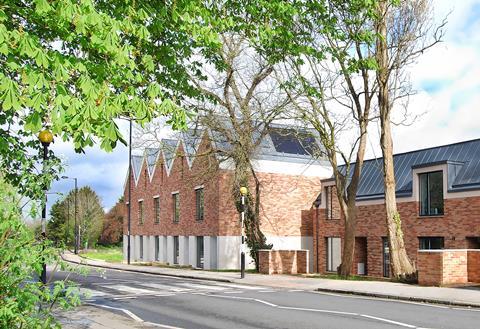
Two residential projects demonstrate the emerging practice’s commitment to sustainability. Hermitage Mews, a development of eight townhouses in south-east London, is designed to achieve net zero targets.
The timber-structured homes meet the RIBA’s 2030 Climate Challenge, minimising embodied carbon and reducing operational energy, with average u-values of 0.10W/m²K. The Director’s Cut, a house in Saffron Walden, is a deep retrofit of a historic vicarage, achieving LETI retrofit best practice.
The judges said: “This entry displayed small, modest projects, with a lovely approach to net zero, as well as overall thoughtful and very lovely designs.”
Education Architect of the Year (nursery to 6th form)
Hawkins\Brown
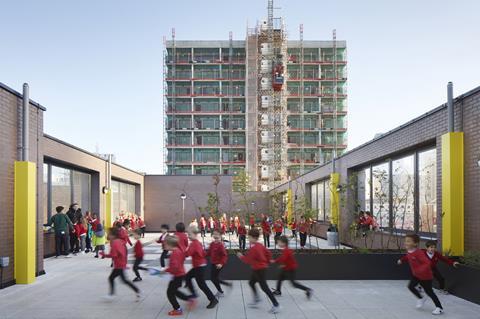

Three of the four projects in Hawkins\Brown’s entry are state schools. These include St Mary’s Voluntary Catholic Academy in Derby, the first primary to meet the Department for Education’s GenZero and biophilic brief.
In London, the practice has completed the City of London Primary Academy Islington and Central Foundation Boys’ School at Old Street, the latter a phased, decade-long redevelopment. The submission is completed by Notting Hill and Ealing Junior School.
The judges said: “The projects showcase an innovative approach to upgrading space with a commitment to user wellbeing and thoughtful material selection.”
Higher Education of the Year
TODD Architects
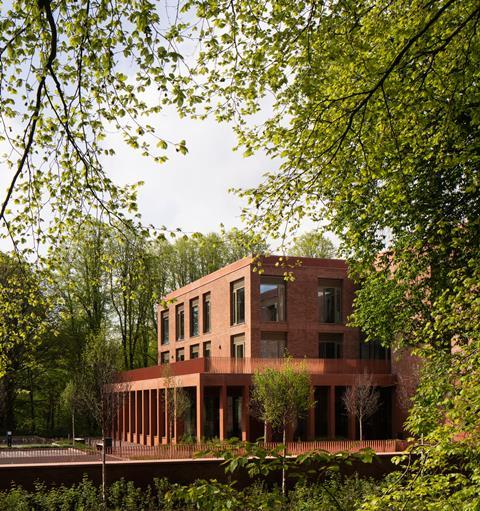

According to the practice, the four diverse submitted projects are linked by an understanding that education environments must be ‘flexible, sustainable, inspiring, supportive, and involving for students, staff, and visitors’.
The entry includes student hubs for Queens Business School in Belfast and the London Business School, a reconfiguration of the Royal Irish Academy of Music in Dublin and the proposed Advanced Robotics & Engineering Institute for Bradford College.
The judges said: “The entry showcases thoughtful integration with surroundings, people-centered design, and high-quality construction, as seen in the Queens Business School and the Academy of Music extension, featuring a convincing new hybrid structure in Bradford, with a focus on reusing existing buildings for maximum impact, enhancing context, and prioritising sustainability in every decision.”
Best Architect Employer of the Year
We Made That

The practice, which works exclusively for the public sector and charities, is committed to both delivering public good and being the best employer it can.
A certified B Corp since 2021, it co-founded the RE-SET-GO work experience and mentoring programme to help widen access to working in the built environment for those from under-represented backgrounds. In 2023, the practice became a Mayor of London’s Good Work Standard employer.
The judges said: “The presentation clearly communicates the practice’s ethical principles and values, highlighting individual empowerment, impressive diversity, a unique ‘things we won’t do’ list, and a notable progress on diversity measures.”
Individual House Architect of the Year
Sandy Rendel Architects
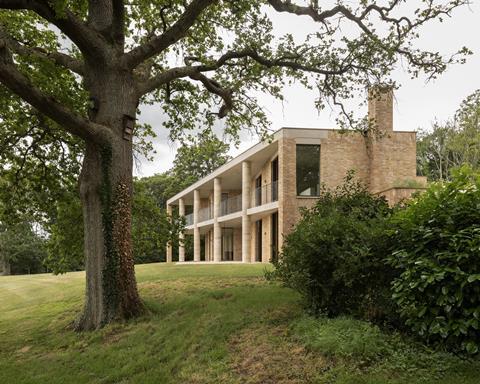
Set within the South Downs National Park, Bury Gate Farm is conceived as a modern interpretation of a villa within a parkland setting.
Onsite renewables enable the EPC A-rated house to generate a surplus of electricity. Also in West Sussex, Morlands Farm Dutch Barn and Tower converts a historic barn and adds a cylindrical viewing platform. The entry also includes Stonery Farm, an ongoing farm building redevelopment incorporating flintwork walling.
The judges said: “Elegant and contemporary, each project demonstrates impressive attention to client needs and sustainability, harmonising with their landscapes and surroundings, including three diverse self-build and research projects: two new builds, a barn conversion, and a Palladian villa, all thoughtfully presented with a focus on carbon considerations.”
Retail and Leisure Architect of the Year
Feilden Clegg Bradley Studios

The practice’s submission includes the ambitious Eden Earthworks, a proposed regenerative transformation of the Dundee Gasworks into a place where people can learn from, and reconnect with, nature.
In Brighton, it has revitalised the Grade I listed Brighton Dome Corn Exchange and Studio Theatre, while in Cardiff, the Llanishen and Lisvane Reservoir Centre provides a two storey larch-clad hub for recreational visitors.
The judges said: “The refurbishment of Sheffield’s Corn Exchange and facade conservation reflect a thoughtful design intervention that honours the building’s architectural heritage. FCBS skillfully navigates the challenges of integrating large-scale projects into historic city centres, as demonstrated across its showcased work, including the sensitive yet understated Eden Project Dundee and the partially realised Heart of the City II in Sheffield, all aiming to repurpose and revitalise existing structures with innovative and beautiful solutions.”
WA100 International Architect of the Year
Sanjay Puri Architects

Based in Mumbai, the Indian practice was established in 1992. Its entry features energy efficient projects across different typologies including Rajasthan School, which is designed not to need air-conditioning even in the desert climate.
The Aria Hotel in Maharastraj utilises local black basalt stone while Mirai House of Arches uses local adobe bricks, lime plaster and sandstone. Ras Houses is low-rise housing in bright colours derived from the traditional Rajasthan colour palette.
The judges said: “The designs of these buildings adopt passive and material measures to address extreme climates, achieving contextual, sustainable, and innovative solutions: Aria Hotel minimises cut and fill with local basalt, Rajasthan School challenges norms with a vibrant, contextual layout, and Maria House uses a sculptural envelope for cooling.”
Office Architect of the Year
dMFK Architects

Four London retrofits comprise the entry from dMFK Architects. In Chiswick, the practice has restored the Grade II* listed, Arts & Crafts Voysey House for Dorrington.
The 1950s Chancery House has been retrofitted into an amenity-packed workplace for Fora, while 45 Whitfield Street delivers flexible offices in a 1970s building in Fitzrovia. The entry is completed by the practice’s own offices at 76 Charlotte Street, designed to attract staff back after the pandemic.
The judges said: “DMFK Architects’ portfolio demonstrates a sensitive and innovative approach to architectural heritage and context, showcasing beautifully crafted detailing, well-considered internal spaces, and thoughtful responses to post-pandemic trends, with projects like Chancery House and Voysey House exemplifying the practice’s ability to seamlessly integrate modern needs with historical charm.”
Industry/Manufacturing Partner of the Year
Internorm Windows UK
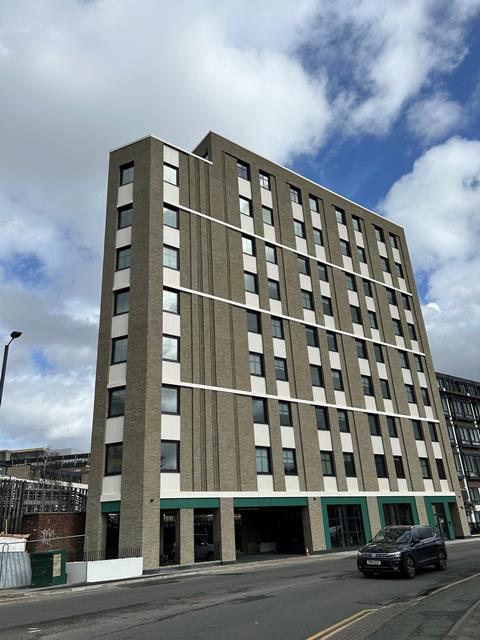
Internorm manufactures high performance, triple-glazed windows and doors, with a focus on Passivhaus standards for new-build and EnerPHit for retrofit projects.
The company works closely with architects to develop optimum solutions including bespoke elements, and offers a full service package from survey to installation for larger-scale residential schemes.
Recent projects include Entopia, home of the Cambridge Institute for Sustainability Leadership. Last year it delivered nearly 150 CPDs to architects.
The judges said: “Internorm’s collaboration with the industry showcases their ability to optimise thermal, acoustic, and light transmission properties in triple-glazed windows meeting Passivhaus standards, demonstrating an impressive, interactive approach with tailored services, CPD offerings, innovative shading devices, and strong project examples and testimonials.”
One Off Small Project of the Year
Tikari Works
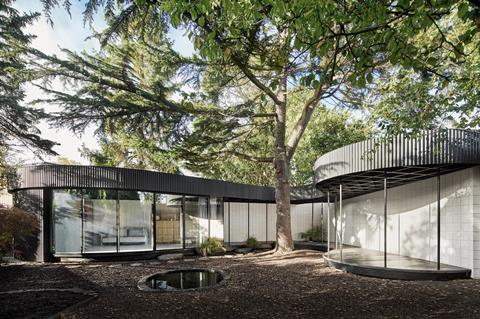
A Room Around A Tree is a garden room designed around a mature Lebanese cedar.
Tikari Works acted as both architect and main contractor, and was able to produce many of the building elements on site including the curved structural joinery of the engineered roof and the oak kitchen cabinetry.
As well as providing flexible space, the room acts as an acoustic and visual screen from overlooking buildings.
The judges said: “This visually stunning project excels in creating dramatic and unique spaces with beautiful and inventive design.”
Creative Conservation Architect of the Year
Hugh Broughton Architects
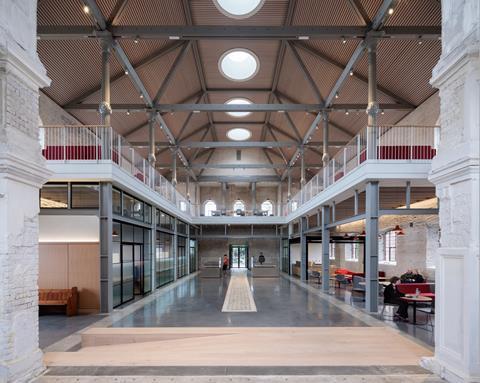
The practice’s methodology is informed by research and analysis of historical, social, cultural, and environmental context, including each site’s unique spirit of place.
Two of the submitted projects are transformations of roofless ruins - Sheerness Dockyard Church, now a co-working and café space, and Clifford’s Tower in York, which has been given a new rooftop viewing structure. The entry also includes protective archaeological shelters in Cyprus.
The judges said: “Sheerness Dockyard’s restoration and reinvention of a derelict site, Cliffords Tower’s elegant new viewing deck, and the Prototype Archaeological Shelters’ innovative protection of sensitive sites showcase a strong, bold yet sensitive body of work, reflecting Hugh Broughton’s deep understanding of heritage sustainability and collaborative approach.”
Refurbishment and Reinvention Architect of the Year
Gibson Thornley
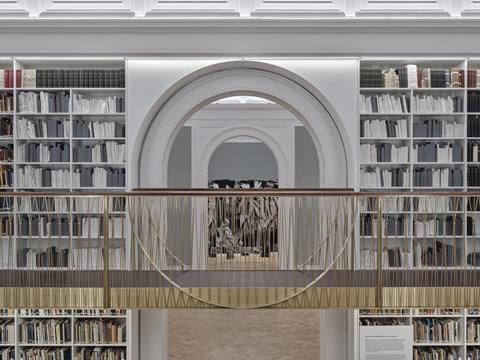
Two museum projects are included in Gibson Thornley’s entry. In London, the second phase of the V&A’s Photography Centre was co-designed in collaboration with a group of young people to ensure the new gallery spaces felt inclusive.
In Aylesbury, the Grade II listed Bucks County Museum has been de-cluttered and reworked to give the collection improved coherence. Ongoing reinventions include the Richard Seifert-designed Maple House on London’s Tottenham Court Road.
The judges said: “The projects are diverse and beneficial, with notable successes at the V&A for its thoughtful co-design with young people and well-considered space sequence, Maple House for its impressive landscaping, and Orwell House for its sustainability details and material use.”
Public Building Architect of the Year
Feilden Clegg Bradley Studios
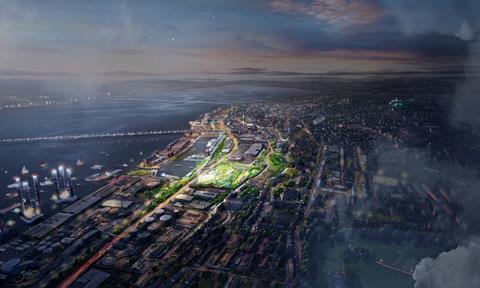
Completed projects include the revitalisation of the Grade I listed Brighton Dome Corn Exchange and Studio Theatre, and the new build Llanishen and Lisvane Reservoir Centre in Cardiff.
In Dundee, the practice is working on the transformation of a former gasworks into Eden Earthworks, which will promote the regenerative power of nature.
The Bristol Zoo Project will create a modern conservation zoo to breed species at risk of extinction.
The judges said: “These projects exemplify excellence in marrying historic preservation with modern functionality, transforming sites with sustainable practices, enhancing visitor experiences through innovative designs, and fostering community engagement and environmental education.”
Public and Social Housing Architect of the Year
Pollard Thomas Edwards
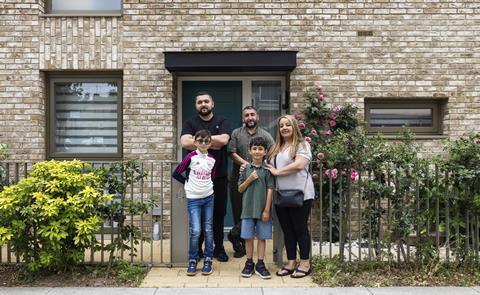
The practice’s approach is ‘placing people first, understanding their needs and designing to suit’.
Its four submitted London projects include a RIBA Award-winning council infill housing on a post-war estate (Dover Court), a mixed-tenure development that serves as a case study for the Happy Homes social value toolkit (King Square), a retrofit of a 1930s estate (Barnsbury Estate) and 240 homes in the heart of Brixton (The Brixton Rec).
The judges said: “This practice demonstrates a strong commitment to people-centered architecture with an environmental focus and a deep engagement with end users, showcased through a diverse range of projects from family houses to large-scale retrofits and infill developments, including the successful Dover Court and Kings Square projects.”
Private Housing Architect of the Year
Alison Brooks Architects
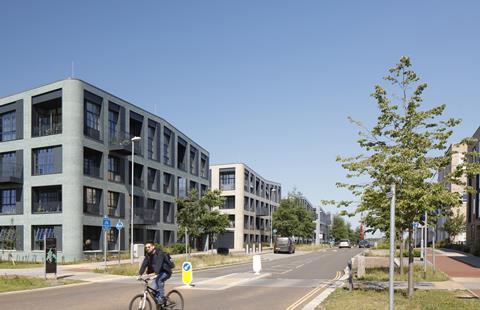
The practice embraces residential architecture as ‘civic infrastructure that enables human potential’.
In Cambridge, the 186-dwelling Rubicon scheme integrates cycle storage and maintenance facilities into a five-building plan while Knights Park in Eddington will be the UK’s first net zero-carbon neighbourhood (in collaboration with PTE).
Two London projects also feature in the entry – Cadence at King’s Cross and One Ashley Road in Tottenham Hale.
The judges said: “The work showcases a high level of design innovation with unique originality and depth in UK housing, as demonstrated by the impressive and refreshing Knights Park, which not only addresses climate challenges but also presents a strong portfolio of carefully considered, well-detailed schemes, including exemplary high and low-rise housing that excels in creating context and achieving net zero ratings.”
Interior Architect of the Year
Proctor & Shaw
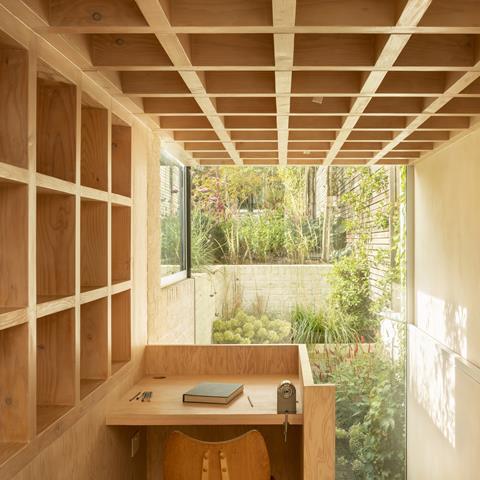

Adaptations of four existing London homes demonstrate the practice’s promotion of natural materials and commitment to sustainability.
At Dulwich House, the whole house renovation drove down energy use with the introduction of extensive thermal linings, an air source heat pump and a bio-ethanol stove.
In Highgate, a Grade II listed house has been refurbished and extended with a natural palette including Douglas fir, resin terrazzo and natural clay plaster.
The judges said: “A delightful collection of projects showcases excellent detailing and a strong control of light, form, and craft, with thoughtful integration of architecture and design elements like shading devices and cabinetry, offering joy.”
Social Value Award
INCH Architecture
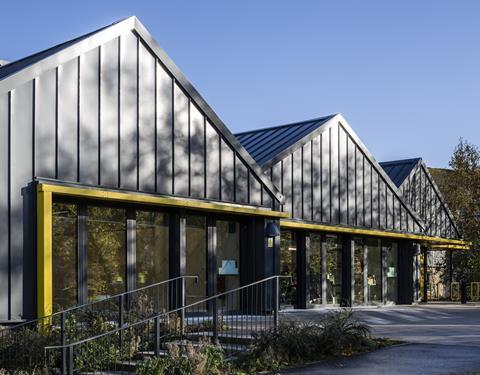
The Glasgow-based social enterprise practice believes that good design is for everyone, and has collaborated with over 30 third sector organisations since its inception in 2012.
Its entry showcases three community projects in Inverclyde: the Craigend Resource Centre in Greenoch East, and the horticulture-focused community hubs of Broomhill Gardens and Parklea. The latter is a flood-resilient pavilion overlooking the Clyde Estuary.
The judges said: “The practice’s founding principle of social value drives their long-standing efforts, as evidenced by thoroughly integrated design and community engagement across projects, yielding clear social impact despite limited feedback on sustainability and presenting a balance between budget constraints and user delight.”
Young Architect of the Year
Brisco Loran


Brisco Loran believes in the capacity of architecture to uplift and to facilitate connection. Its entry includes Studio Nencini, a RIBA Award-winning reconfiguration and studio extension of a home in Norwich.
Costa’s Barbers creates a live-work space occupied by the practice in a former retail space on London’s Battersea High Street. Old Rectory revives a derelict house in Lincolnshire into a low-energy home.
The judges said: “Accomplished and beautifully designed buildings with an impressive track record of awards and publications, showcasing consistent elegance and a preference for timber; Studio Nencini excels in contextual response, functional design, and sustainability, while Costa’s Barbers offers notable urban integration and flexible use but could improve on environmental impact details. The Old Rectory excels in sustainability, contextual respect, and material quality, and the A+U Framework highlights a commitment to community and sustainable housing with strong contextual response.”




























No comments yet